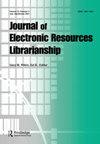来自战壕的建议
Q3 Social Sciences
Journal of Electronic Resources Librarianship
Pub Date : 2023-04-03
DOI:10.1080/1941126x.2023.2197753
引用次数: 0
摘要
随着时间的推移,电子书和电子有声书的出版商已经改变了向图书馆提供这些材料的方式。一个变化是关于DRM(数字版权管理)。DRM本质上是一种控制非法使用的手段,防止在线盗版受版权保护的材料。DRM可以限制谁可以访问电子书,限制可以复制或下载的电子书内容的数量,限制下载可以存储在用户个人设备上的时间以及可以使用的应用程序和/或电子阅读器,并影响电子书图像的清晰度或模糊性(Roach, 2023)。没有标准的DRM技术。DRM是一种受控数字借贷(CDL)形式。基本上,DRM被描述为一种控制知识产权的手段,但也被视为一种管理数字版权的方式(美国图书馆协会,2009)。图书馆的一个基本原则是,以既保护内容创建者又保护用户隐私的方式,以任何格式提供对受版权保护的内容的访问。专有的DRM技术及其在电子书供应商之间缺乏标准或互操作性影响了图书馆用户与数字内容的交互和访问方式,导致用户在访问和阅读数字文件时感到沮丧,并担心他们的隐私和内容的使用可能被跟踪。许多图书馆用户直言不讳地表示,数字版权管理挑战了他们在线获取信息的能力(Lemmer & Wale, 2016)。图书馆了解用户对DRM的意见。在资源组合中加入不断变化的内容许可环境。授权资源内容是一种合同形式,资源馆员可能有责任代表他们的图书馆就这种合同进行谈判。资源内容提供者越来越多地采用限制性或计量许可模型,例如在指定的几个月后(通常为12或24个月)或在有限数量的使用或签出之后过期的许可。“图书越来越多地成为图书馆不拥有的东西,而是从拥有图书的公司借来的东西”(Gross, 2021, p. 1)。注意到图书馆用户和图书馆要求更多数字访问的声音,一些州试图通过立法,以便出版商向图书馆提供“合理的”电子书许可。马里兰州通过了这样的法律,但在2022年被联邦法院裁定违宪,无法执行。田纳西州、罗德岛州和其他几个州也在考虑类似的法律。这些努力正在根据联邦对马里兰州法律的裁决进行修订。本文章由计算机程序翻译,如有差异,请以英文原文为准。
Tips from the trenches
Over time, publishers of ebooks and eAudiobooks have changed the way they offer these materials to libraries. One change is in regards to DRM (Digital Rights Management). DRM is essentially a means to control unlawful use, to prevent online piracy of copyrighted material. DRM can restrict who can access that ebook, curb the amount of ebook content that can be copied or downloaded, limit how long downloads can be stored on a user’s personal device and which applications and/or e-readers that can be used, and impact the clarity or blurriness of the ebook image (Roach, 2023). There is no standard DRM technology. DRM is a form of controlled digital lending, or CDL. Basically, DRM is described as a means to control intellectual property, but is seen as a way to manage digital rights (American Library Association, 2009). A basic tenet of libraries is to provide access to rights-protected content in whatever format that content exists, in a manner that protects both the content creator and the privacy of the user. Proprietary DRM technology and its lack of standards or interoperability among ebook vendors impacts how library users interact with and access digital content, leading to frustration when accessing and reading digital files and worries about how their privacy and use of that content may be tracked. Many library users have been vocal about how DRM has challenged their ability to access information online (Lemmer & Wale, 2016). Libraries are aware of user opinions regarding DRM. Add into the eresource mix the changing landscape in regards to the licensing of content. Licensing eresource content is a form of contract, and eresource librarians may have the responsibility to negotiate such contracts on behalf of their library. Eresource content providers are increasingly employing restrictive or metered licensing models, such as licenses that expire after a specified period of months (generally 12 or 24months) or after a limited number of uses or checkouts. “Increasingly, books are something that libraries do not own but borrow from the corporations that do” (Gross, 2021, p. 1). Heeding the voices of library users and libraries for greater digital access, some states have attempted to legislate such, so that publishers offer “reasonable” ebook licenses to libraries. Maryland passed such a law, but in 2022 it was ruled unconstitutional and unenforceable by a federal court. Tennessee, Rhode Island, and a few other states were considering similar laws. These efforts are being revised in light of the federal ruling on Maryland’s law.
求助全文
通过发布文献求助,成功后即可免费获取论文全文。
去求助
来源期刊

Journal of Electronic Resources Librarianship
Social Sciences-Library and Information Sciences
CiteScore
1.50
自引率
0.00%
发文量
46
期刊介绍:
A journal for information professionals who work with managing electronic resources in libraries The Journal of Electronic Resources Librarianship (renamed from The Acquisitions Librarian to reflect the journal"s broader focus) provides a much-needed scholarly forum for librarians and other information professionals. This peer-reviewed quarterly journal addresses evolving work-related processes and procedure, current research, and the latest news on topics related to electronic resources and the digital environment"s impact on collecting, acquiring, and making accessible library materials. The journal provides opinion pieces, the latest news, book reviews, conference presentations, and e-resources related updates.
 求助内容:
求助内容: 应助结果提醒方式:
应助结果提醒方式:


